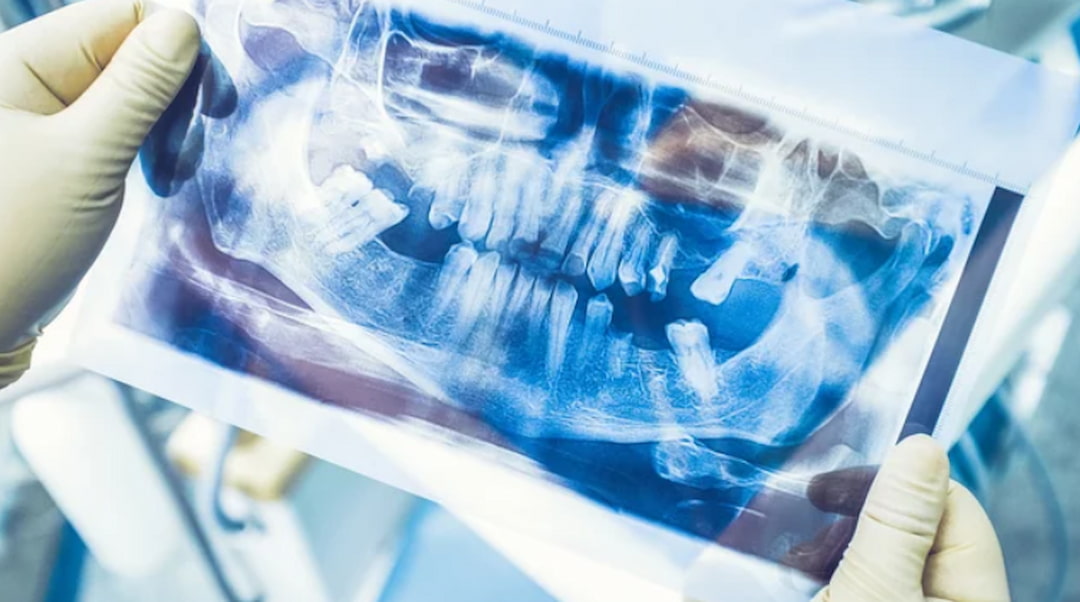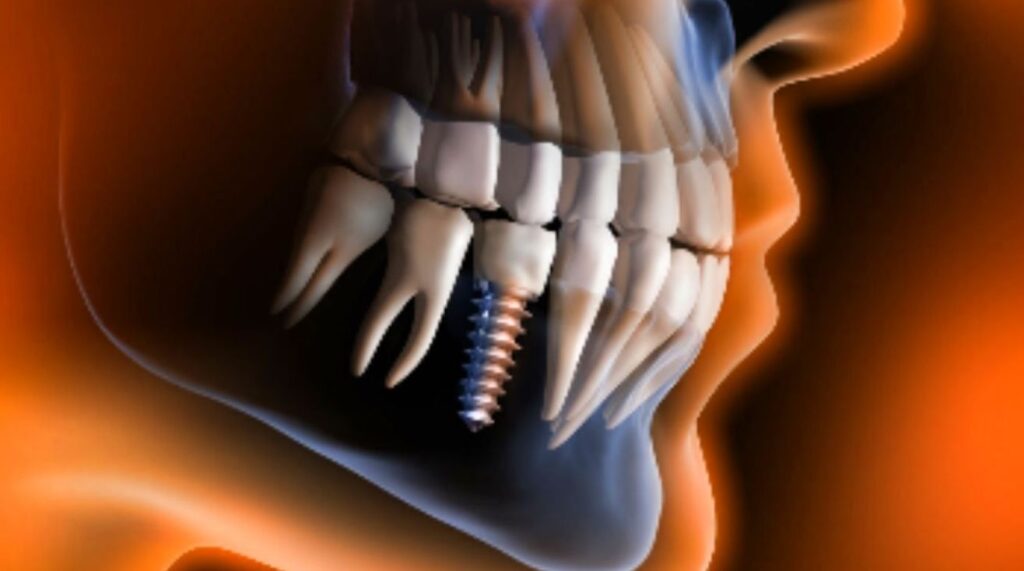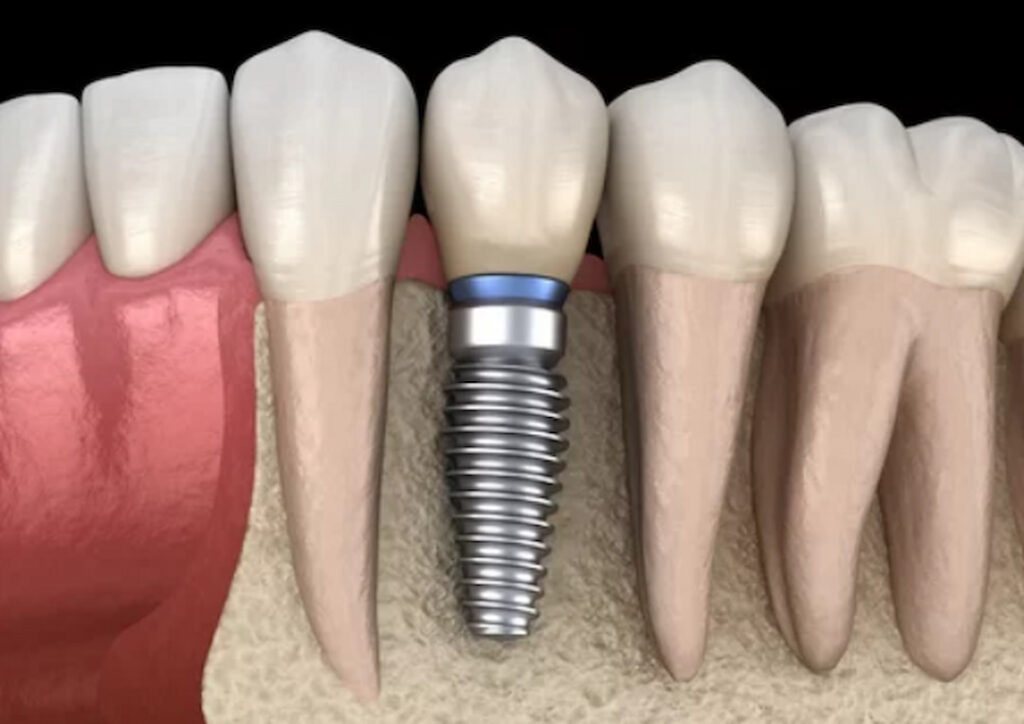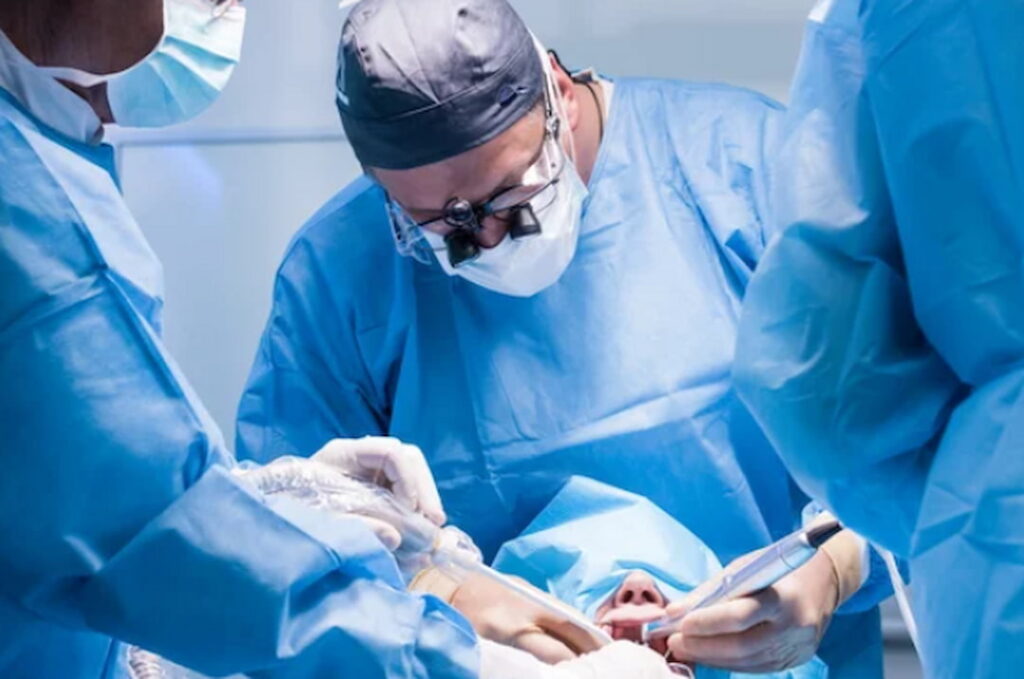
Getting dental implants is a big decision for those who are good candidates for the procedures. Getting implants might sound relatively simple, but there is a considerable amount of surgery and recovery that will be needed. Not only will you need to have relatively good oral health before the procedures, as well as maintaining good oral hygiene after the surgery concludes and becomes the recovery. Here is more information about bone implants for teeth.
What Are Bone Implants For Teeth?
When people refer to bone implants for teeth, they are usually talking about one of two things. They may be referring to the devices implanted in the jaw bone itself, or they may be referring to the bone grafts that are sometimes needed to complete a procedure effectively. These bone grafts are used to fill in missing bone structure that is needed for osseointegration.
Some implant procedures won’t even be able to be conducted without extensive grafting beforehand. There are two common types of dental implants and several primary grafting techniques that are used to help build bone mass for anchoring.
Different Types Of Dental Implants
Subperiosteal
The subperiosteal implant is located on top of the jaw bone and is usually designed with exposed metal attachment points. These anchor points will secure the implant into the gums to hold the implant securely in place. The subperiosteal method is usually used when the patient receiving the implant doesn’t have enough bone mass or height to hold the implant secure in its location.
Endosteal

Endosteal implants are the more common type of the two. They are implants located in the bone and consist of an anchor piece that is set into the jaw bone. This anchor will act as a mounting point for one or more synthetic teeth that are made as a prosthesis. The endosteal implant is often the choice for patients that already have removable dentures or even dental bridges.
Bone Grafting For Dental Implants
The four most common types of bone grafts often seen in conjunction with implants are:
Ridge Augmentation
Ridge augmentations are usually seen in patients that have extensive bone loss due to having missing dentitions for a while. This graft is used to help support jaw bone that is thinner than expected or required for an implant. Since it can be used to widen and add volume to the jaw bone itself, it makes an ideal, stable, foundation for several restorative methods.
This is considered to be one of the most complex bone grafts to do since it involved the upper back jaw areas, which is one of the most challenging areas to install grafts due to the low amount of sinus bone tissue present in even the healthiest of people. It continues to be a valuable technique, however, raising the amount of bone mass present in the sinus.
Socket Preservation
Socket preservation, otherwise sometimes called ridge preservation, is used to prevent the loss of the entire socket. This graft takes the bone material and places it directly into the socket after the tooth is removed. This allows the entire void of the socket to be filled, which can provide a robust anchor point and powerful preventative measure against cave-ins.
Sometimes this risk is associated with congenital defects or deformities of the jaw bones. Both the upper jaw and lower jaw can leave the patient with little to no bone mass to anchor an implant. The bone matter is placed into the void between the jaw bone and the gums and permitted to integrate with the rest of the bone.
Sinus Lift
If your wisdom teeth were ever pulled, you could have sinus issues. The area above and behind your top back teeth are your maxillary sinuses, which can drop down to cause issues with potential sinus membranes. This can be fixed with a sinus lift, where the sinus is lifted back into its correct position. The bone graft material is used underneath the sinus, to allow
Periodontal Graft
A periodontal bone graft is where gum disease and other infections slowly break down the bone material and another supportive framework. This will commonly cause loose teeth, which can be fixed with a periodontal bone graft. It will reduce the mobility of nearby teeth while also providing support to adjacent teeth.

What Level Of Tooth Replacement Do You Need?
There are a few different options when you’re investigating bone implants, and each patient’s needs will dictate what procedures are going to be right for them.
Single tooth procedures are relatively popular and will be an ideal replacement process for those missing a single tooth, or two that aren’t adjacent in the mouth. The process is that the tooth or teeth that are going to be replaced will need to be extracted, then the anchor for the implant will be used.
A similar process can be used for multiple tooth dental implants. These are cases where multiple consecutive teeth will need to be replaced. In these situations, the process itself will remain largely the same while the recovery will become more significant.
The final type of replacement process for bone implants is called full-mouth dental implants. This is where the patient doesn’t retain any of their original dental work. Full-mouth dental implants are frequently used for seniors that are missing all of their teeth. They may also be used to replace teeth badly damaged by drug abuse or other issues.

Post Procedure Follow-Up
If you decide that dental implants are for you, you’ll need to schedule your appointments for the procedures themselves, as well as for follow-up appointments needed to gauge your healing. Since full osteointegration is the goal for all implants, getting back to the dentist’s office shortly after installation will let your care team image your mouth and view the healing and bone regrowth that is happening with your case.
These can also be a safeguard to help catch any potential complications quickly and easily, as they pop up. Missing just a single post-operative appointment could mean that important information is missed, or imaging is taken just a little too late. If you or someone you know has just had dental implant surgery, healing can take a significant amount of time.
Is Getting A Bone Implant For Teeth Painful?
Getting dental implants is a relatively major dental surgery and as such, it will be relatively painful under the right circumstances. Make sure you are completely honest with your doctor and anesthesiologist and be sure you pay attention to the dentist’s orders regarding recovery measures and medication.
You will have a restricted diet for a short while, to help ease the healing of the implant posts, and you’ll have pain control medication. Once you have completed the process and are in the healing stage, be sure you follow recovery restrictions on movement or activity that your dentist sets.
Even squeezing in an extra workout where it’s not planned for can have disastrous effects, like raising your blood pressure and having a bleed. This means the best chance of having a quick and uneventful recovery is to follow all the directions for post-op care.
If You Need Whitening With Your Current Oral Care
One of the most frustrating things about losing tooth health is that your bright smile takes the first hit. What once was a gleaming white smile is now sporting a duller, even discolored base tone. In most cases, returning a vivid, white color to your teeth requires no more than a small whitening setup that can be used in minutes.
If you have been noticing your bright, white, smile slip further and further away, you may be able to get that white smile quickly refreshed with a few whitening treatments. This can save you considerable time and energy, not to mention money, on returning your smile to its former glory. Reach out today for current pricing and deals.

